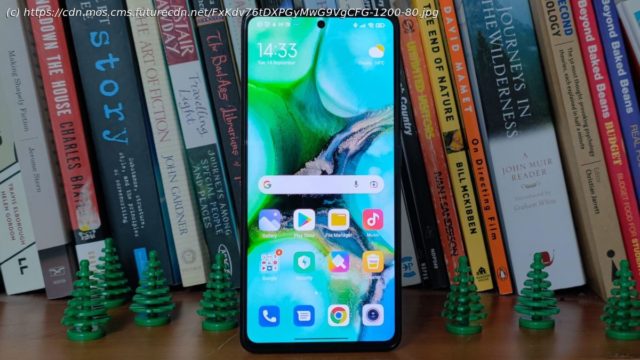The Xiaomi 11T Pro is a solid mid-range phone with a few standout features – but the standard 11T is a better buy.
While the main numbered range of Xiaomi phones is where the company debuts its flashy new tech and features, the T line is often where the real action is. Launching roughly six months after the Xiaomi Mi 11, the 11T Pro offers lots of the features of that premium phone in a device that’s more modestly priced, though with a few corners cut here and there to keep that price low. That’s the whole point of the Mi T family, but while the Mi 10T Pro was an intriguing counterpoint to the Mi 10 and Mi 10 Pro, the 11T Pro is an impressive device that will easily tempt buyers away from the ‘standard’ Mi 11. The Xiaomi 11T Pro – note the lack of the ‘Mi’, as Xiaomi has stopped using the duplicate Mi branding that we used to see in handsets from the company – is a flagship phone in the areas where it counts. It has almost exactly the same camera array, the same chipset, a bigger battery and faster charging than the Mi 11. Sure, its screen is a tiny bit smaller, but due to the display having flat edges (not curved, as in the Mi 11) the viewable area is basically the same size. That fast charging we mentioned is definitely the biggest new feature, as it’s a startling 120W using the in-box charger. That’s over twice as fast as the 55W charging of the Mi 11, and zooms past the Samsung Galaxy S21 ’s 25W or the iPhone 12 ’s 15W. It takes just over 15 minutes – that’s not a typo: fifteen – to power the phone to full at that speed. Many other features here were expected in the Mi 11, but are impressive here due to the lower price. The Snapdragon 888 chipset, for example, is most commonly found in premium phones, though some cheaper handsets have it too, and it provides oodles of processing power for gaming or other tasks. Well, in theory it does… but the 888’s oft-reported overheating issue rears its head here. The chipset has been known to overheat when pushed, which can in turn reduce its performance until it cools down, so if you use the phone heavily you might run into this issue. That’s not the only minor annoyance the Xiaomi 11T Pro presents – another is that the material used for its rear easily picks up fingerprints. Within a few minutes of starting to use the device, our review unit looked as much like an impressionist painting as a smartphone. Oh, and people with smaller hands might struggle to reach the side buttons on the phone, as it’s a pretty chunky device. Overall, though, we were impressed with the Xiaomi 11T Pro during our testing. It’s just a shame it won’t be the stand-out member of the Mi 11T line, as the non-Pro version is cheaper with relatively few downgrades. The Xiaomi 11T Pro release date is October 1, with pre-orders beginning the week before. That’s slightly earlier than the non-Pro’s release date on October 7. The price is £599 (roughly $830, AU$1,130) – that’s for 8GB RAM and 128GB storage, and that goes up to £699 (about $970, AU$1,320) for double the storage. Right now we only have UK prices, but it’s likely the phone will also go on sale in Australia. For context the Xiaomi Mi 11 cost £749 / AU$1,099 (roughly $1,040) for the former storage size and £799 / AU$1,139 (around $1,110) for the latter making this a more affordable device, at least in regions we have prices for. The real competition here is the Xiaomi 11T, as its main downgrades from the standard phone are slower charging and a slightly weaker chipset. However starting at just £499 (about $690, AU$940) the lower price more than makes up for the reduced specs. The Xiaomi 11T Pro isn’t the most visually distinct smartphone in the world, but that’s the company’s T line for you. It’s a big phone – maybe too big for some people to comfortably use, as it was a stretch for us and we’ve got fairly average-sized mitts – but that’s because you’ve got so much screen space. On the right edge of the phone is a fingerprint scanner, which was just within reach for us but might be a struggle for some to hit. It’s an impressively responsive scanner, and we never had trouble unlocking our phone just with a tap of our thumb. In fact, we sometimes found the sensor a little too sensitive – when we were holding the device in our hand while walking or on a run, even a slight brush of our thumb over the scanner would unlock the phone, meaning that we often unlocked the device when we didn’t want to. We can’t really mark a phone down for having a feature that’s too good, but it’s something worth noting. Just above the fingerprint scanner is the volume rocker. The handset has a USB-C port but no 3.5mm headphone jack, so fans of wired audio will need an adaptor if they want to plug their cans in. A nice improvement over the Mi 10T Pro here is the camera bump on the back, which stuck out like a mountain range on the 2020 phone, but on the 11T Pro is much less imposing. The rear of the phone isn’t without its issues though, as it’s a fingerprint magnet – holding and using the device for any length of time will turn the smooth plastic, which comes in a choice of white, blue, or gray, into a patchwork of smudges and marks.






